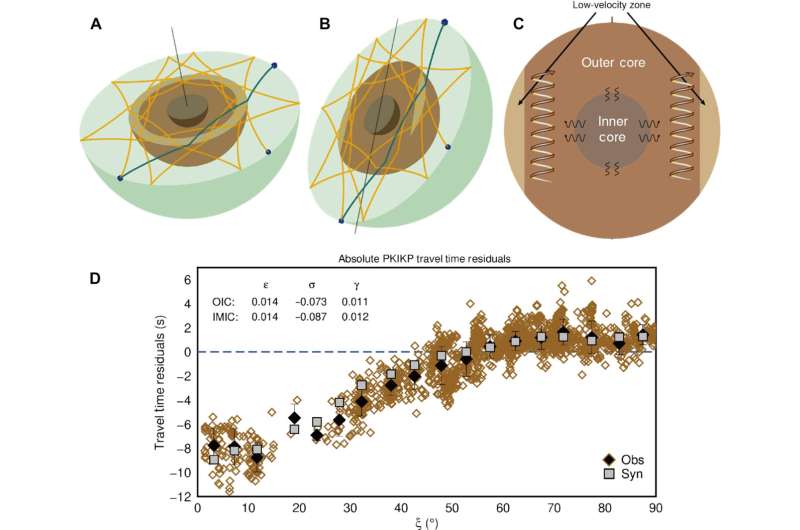A doughnut-shaped region thousands of kilometers beneath our feet within Earth’s liquid core has been discovered by scientists from The Australian National University (ANU), providing new clues about the dynamics of our planet’s magnetic field.
The structure within Earth’s liquid core is found only at low latitudes and sits parallel to the equator. According to ANU seismologists, it has remained undetected until now.
The Earth has two core layers: the inner core, a solid layer, and the outer core, a liquid layer. Surrounding the Earth’s core is the mantle. The newly discovered doughnut-shaped region is at the top of Earth’s outer core, where the liquid core meets the mantle.
Study co-author and ANU geophysicist, Professor Hrvoje Tkalčić, said the seismic waves detected are slower in the newly discovered region than in the rest of the liquid outer core.
[…]
“We don’t know the exact thickness of the doughnut, but we inferred that it reaches a few hundred kilometers beneath the core-mantle boundary.”
Rather than using traditional seismic wave observation techniques and observing signals generated by earthquakes within the first hour, the ANU scientists analyzed the similarities between waveforms many hours after the earthquake origin times, leading them to make the unique discovery.
“By understanding the geometry of the paths of the waves and how they traverse the outer core’s volume, we reconstructed their travel times through the Earth, demonstrating that the newly discovered region has low seismic speeds,” Professor Tkalčić said.
“The peculiar structure remained hidden until now as previous studies collected data with less volumetric coverage of the outer core by observing waves that were typically confined within one hour after the origin times of large earthquakes.
[…]
“Our findings are interesting because this low velocity within the liquid core implies that we have a high concentration of light chemical elements in these regions that would cause the seismic waves to slow down. These light elements, alongside temperature differences, help stir liquid in the outer core,” Professor Tkalčić said.
[…]
The research is published in Science Advances.
More information: Xiaolong Ma et al, Seismic low-velocity equatorial torus in the Earth’s outer core: Evidence from the late-coda correlation wavefield, Science Advances (2024). DOI: 10.1126/sciadv.adn5562
Source: Doughnut-shaped region found inside Earth’s core deepens understanding of planet’s magnetic field

Robin Edgar
Organisational Structures | Technology and Science | Military, IT and Lifestyle consultancy | Social, Broadcast & Cross Media | Flying aircraft

